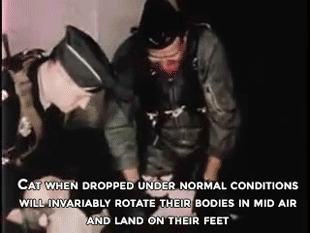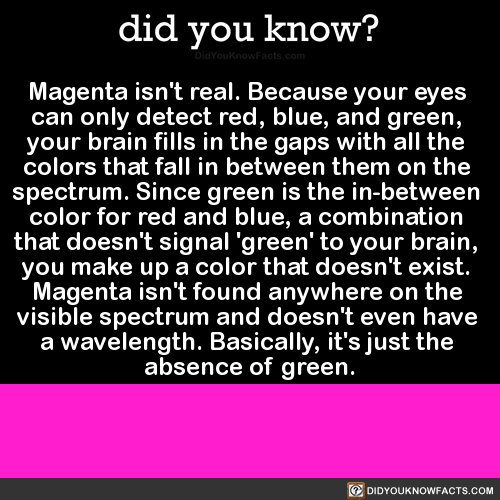Zoos Prevent Extinction. This Is Why I Support Zoos. This Is Why The World Should Support Zoos.
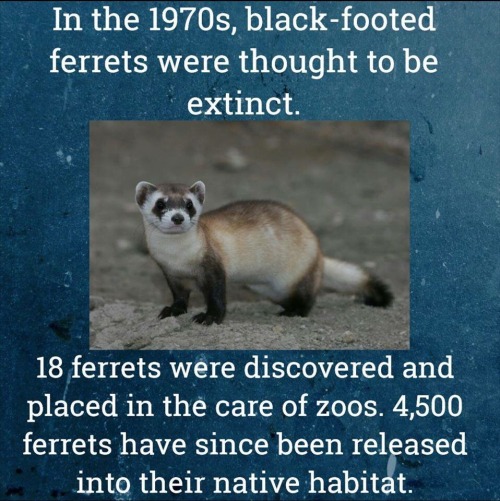
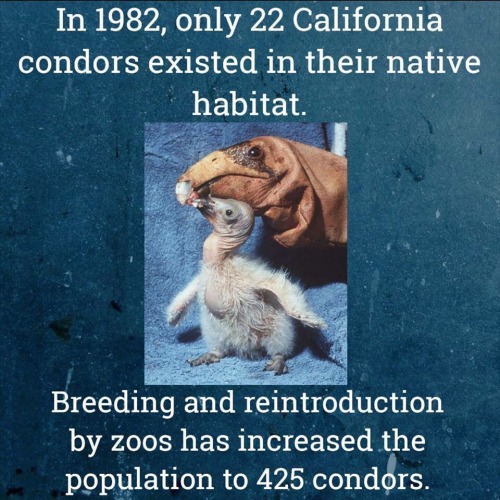


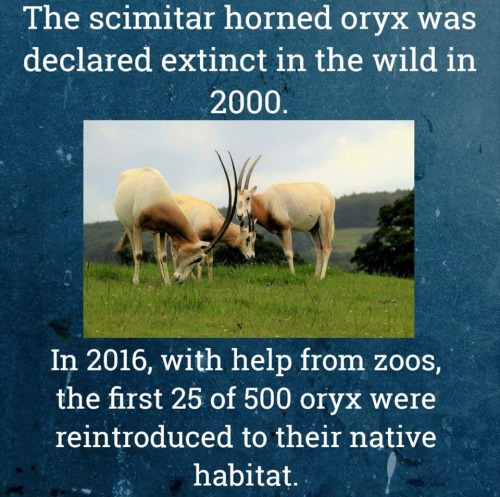
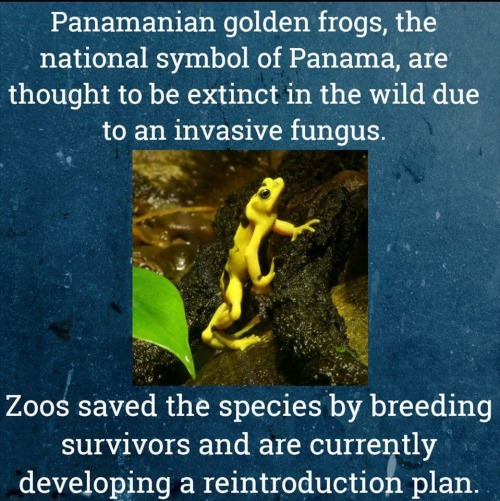
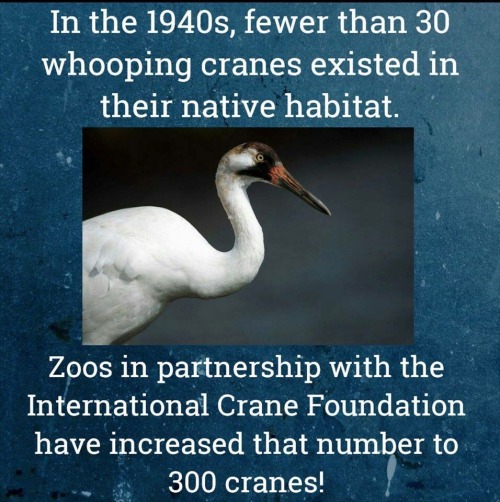

Zoos prevent extinction. This is why I support zoos. This is why the world should support zoos.
Meme credit goes to the zookeepers at www.facebook.com/ZoosSavingSpecies @zoossavingspecies
More Posts from Science-is-magical and Others

(Image caption: The above image compares the neural activation patterns between images from the participants’ brains when reading “O eleitor foi ao protesto” (observed) and the computational model’s prediction for “The voter went to the protest” (predicted))
Brain “Reads” Sentences the Same in English and Portuguese
An international research team led by Carnegie Mellon University has found that when the brain “reads” or decodes a sentence in English or Portuguese, its neural activation patterns are the same.
Published in NeuroImage, the study is the first to show that different languages have similar neural signatures for describing events and scenes. By using a machine-learning algorithm, the research team was able to understand the relationship between sentence meaning and brain activation patterns in English and then recognize sentence meaning based on activation patterns in Portuguese. The findings can be used to improve machine translation, brain decoding across languages and, potentially, second language instruction.
“This tells us that, for the most part, the language we happen to learn to speak does not change the organization of the brain,” said Marcel Just, the D.O. Hebb University Professor of Psychology and pioneer in using brain imaging and machine-learning techniques to identify how the brain deciphers thoughts and concepts.
“Semantic information is represented in the same place in the brain and the same pattern of intensities for everyone. Knowing this means that brain to brain or brain to computer interfaces can probably be the same for speakers of all languages,” Just said.
For the study, 15 native Portuguese speakers — eight were bilingual in Portuguese and English — read 60 sentences in Portuguese while in a functional magnetic resonance imaging (fMRI) scanner. A CMU-developed computational model was able to predict which sentences the participants were reading in Portuguese, based only on activation patterns.
The computational model uses a set of 42 concept-level semantic features and six markers of the concepts’ roles in the sentence, such as agent or action, to identify brain activation patterns in English.
With 67 percent accuracy, the model predicted which sentences were read in Portuguese. The resulting brain images showed that the activation patterns for the 60 sentences were in the same brain locations and at similar intensity levels for both English and Portuguese sentences.
Additionally, the results revealed the activation patterns could be grouped into four semantic categories, depending on the sentence’s focus: people, places, actions and feelings. The groupings were very similar across languages, reinforcing the organization of information in the brain is the same regardless of the language in which it is expressed.
“The cross-language prediction model captured the conceptual gist of the described event or state in the sentences, rather than depending on particular language idiosyncrasies. It demonstrated a meta-language prediction capability from neural signals across people, languages and bilingual status,” said Ying Yang, a postdoctoral associate in psychology at CMU and first author of the study.
Flying to New Heights With the Magnetospheric Multiscale Mission
A mission studying Earth’s magnetic field by flying four identical spacecraft is headed into new territory.

The Magnetospheric Multiscale mission, or MMS, has been studying the magnetic field on the side of Earth facing the sun, the day side – but now we’re focusing on something else. On February 9, MMS started the three-month-long process of shifting to a new orbit.

One key thing MMS studies is magnetic reconnection – a process that occurs when magnetic fields collide and re-align explosively into new positions. The new orbit will allow MMS to study reconnection on the night side of the Earth, farther from the sun.

Magnetic reconnection on the night side of Earth is thought to be responsible for causing the northern and southern lights.

To study the interesting regions of Earth’s magnetic field on the night side, the four MMS spacecraft are being boosted into an orbit that takes them farther from Earth than ever before. Once it reaches its final orbit, MMS will shatter its previous Guinness World Record for highest altitude fix of a GPS.
To save on fuel, the orbit is slowly adjusted over many weeks. The boost to take each spacecraft to its final orbit will happen during the first week of April.

On April 19, each spacecraft will be boosted again to raise its closest approach to Earth, called perigee. Without this step, the spacecraft would be way too close for comfort – and would actually reenter Earth’s atmosphere next winter!

The four MMS spacecraft usually fly really close together – only four miles between them – in a special pyramid formation called a tetrahedral, which allows us to examine the magnetic environment in three dimensions.

But during orbit adjustments, the pyramid shape is broken up to make sure the spacecraft have plenty of room to maneuver. Once MMS reaches its new orbit in May, the spacecraft will be realigned into their tetrahedral formation and ready to do more 3D magnetic science.

Learn more about MMS and find out what it’s like to fly a spacecraft.

I am not going to tag the name of the bird, because I’m pretty sure I would get tagged as NSFW if I did, but I assure you their beaks are getting longer and it’s probably because of the UK’s obsession with bird feeders.


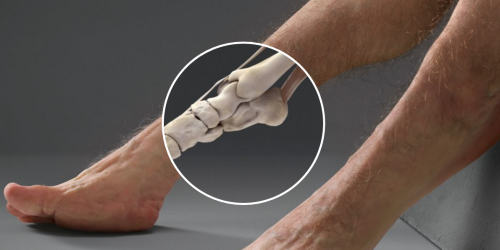
Here’s how nightmarish humans would look if our bodies were designed to survive car crashes
Article by Chris Weller, Tech Insider & Business Insider
If you’re ever in a car with Graham, then don’t bother telling him to buckle his seat belt. His body is already designed to withstand high-speed impacts.
Designed by a trauma surgeon, an artist, and a crash investigator, Graham is a hypothetical scenario come to life. Supported by Australia’s Transport Accident Commission, the project is meant to highlight how vulnerable humans are to injury.
Graham, however, is not.
Keep reading
Newly discovered windows of brain plasticity may help with treatment of stress-related disorders
Chronic stress can lead to changes in neural circuitry that leave the brain trapped in states of anxiety and depression. But even under repeated stress, brief opportunities for recovery can open up, according to new research at The Rockefeller University.

(Image caption: Routine versus disruptive: A familiar stressor (left) did not increase NMDA receptors (dark spots), a booster of potentially harmful glutamate signaling, in the brains of mice. However, when subjected to an unfamiliar stress (right), mice expressed more NMDA receptors)
“Even after a long period of chronic stress, the brain retains the ability to change and adapt. In experiments with mice, we discovered the mechanism that alters expression of key glutamate-controlling genes to make windows of stress-related neuroplasticity—and potential recovery—possible,” says senior author Bruce McEwen, Alfred E. Mirsky Professor, and head of the Harold and Margaret Milliken Hatch Laboratory of Neuroendocrinology. Glutamate is a chemical signal implicated in stress-related disorders, including depression.
“This sensitive window could provide an opportunity for treatment, when the brain is most responsive to efforts to restore neural circuitry in the affected areas,” he adds.
The team, including McEwen and first author Carla Nasca, wanted to know how a history of stress could alter the brain’s response to further stress. To find out, they accustomed mice to a daily experience they dislike, confinement in a small space for a short period. On the 22nd day, they introduced some of those mice to a new stressor; others received the now-familiar confinement.
Then, the researchers tested both groups for anxiety- or depression-like behaviors. A telling split emerged: Mice tested shortly after the receiving the familiar stressor showed fewer of those behaviors; meanwhile those given the unfamiliar stressor, displayed more. The difference was transitory, however; by 24 hours after the final stressor, the behavioral improvements seen in half of the mice had disappeared.
Molecular analyses revealed a parallel fluctuation in a part of the hippocampus, a brain region involved in the stress response. A key molecule, mGlu2, which tamps down the release of the neurotransmitter glutamate, increased temporarily in mice subjected to the familiar confinement stress. Meanwhile, a molecular glutamate booster, NMDA, increased in other mice that experienced the unfamiliar stressor. In stress-related disorders, excessive glutamate causes harmful structural changes in the brain.
The researchers also identified the molecule regulating the regulator, an enzyme called P300. By adding chemical groups to proteins known as histones, which give support and structure to DNA, P300 increases expression of mGlu2, they found.
In other experiments, they looked at mice genetically engineered to carry a genetic variant associated with development of depression and other stress-related disorders in humans, and present in 33 percent of the population.
“Here again, in experiments relevant to humans, we saw the same window of plasticity, with the same up-then-down fluctuations in mGlu2 and P300 in the hippocampus,” Nasca says. “This result suggests we can take advantage of these windows of plasticity through treatments, including the next generation of drugs, such as acetyl carnitine, that target mGlu2—not to ‘roll back the clock’ but rather to change the trajectory of such brain plasticity toward more positive directions.”
A neural network invents diseases you don’t want to get
Science fiction writers and producers of TV medical dramas: have you ever needed to invent a serious-sounding disease whose symptoms, progression, and cure you can utterly control? Artificial intelligence can help!
Blog reader Kate very kindly compiled a list of 3,765 common names for conditions from this site, and I gave them to an open-source machine learning algorithm called a recursive neural network, which learns to imitate its training data. Given enough examples of real-world diseases, a neural network should be able to invent enough plausible-sounding syndromes to satisfy any hypochondriac.
Early on in the training, the neural network was producing what were identifiably diseases, but probably wouldn’t fly in a medical drama. “I’m so sorry. You have… poison poison tishues.”
Much Esophageal Eneetems Vomania Poisonicteria Disease Eleumathromass Sexurasoma Ear Allergic Antibody Insect Sculs Poison Poison Tishues Complex Disease
As the training got going, the neural network began to learn to replicate more of the real diseases - lots of ventricular syndromes, for example. But the made-up diseases still weren’t too convincing, and maybe even didn’t sound like diseases at all. (Except for RIP Syndrome. I’d take that one seriously)
Seal Breath Tossy Blanter Cancer of Cancer Bull Cancer Spisease Lentford Foot Machosaver RIP Syndrome
The neural network eventually progressed to a stage where it was producing diseases of a few basic varieties :
First kind of disease: This isn’t really a disease. The neural network has just kind of named a body part, or a couple of really generic disease-y words. Pro writer tip: don’t use these in your medical drama.
Fevers Heading Disorder Rashimia Causes Wound Eye Cysts of the Biles Swollen Inflammation Ear Strained Lesions Sleepys Lower Right Abdomen Degeneration Disease Cancer of the Diabetes
Second kind of disease: This disease doesn’t exist, and sounds reasonably convincing to me, though it would probably have a different effect on someone with actual medical training.
Esophagia Pancreation Vertical Hemoglobin Fever Facial Agoricosis Verticular Pasocapheration Syndrome Agpentive Colon Strecting Dissection of the Breath Bacterial Fradular Syndrome Milk Tomosis Lemopherapathy Osteomaroxism Lower Veminary Hypertension Deficiency Palencervictivitis Asthodepic Fever Hurtical Electrochondropathy Loss Of Consufficiency Parpoxitis Metatoglasty Fumple Chronosis Omblex's Hemopheritis Mardial Denection Pemphadema Joint Pseudomalabia Gumpetic Surpical Escesion Pholocromagea Helritis and Flatelet’s Ear Asteophyterediomentricular Aneurysm
Third kind of disease: Sounds both highly implausible but also pretty darn serious. I’d definitely get that looked at.
Ear Poop Orgly Disease Cussitis Occult Finger Fallblading Ankle Bladders Fungle Pain Cold Gloating Twengies Loon Eye Catdullitis Black Bote Headache Excessive Woot Sweating Teenagerna Vain Syndrome Defentious Disorders Punglnormning Cell Conduction Hammon Expressive Foot Liver Bits Clob Sweating,Sweating,Excessive Balloblammus Metal Ringworm Eye Stools Hoot Injury Hoin and Sponster Teenager’s Diarey Eat Cancer Cancer of the Cancer Horse Stools Cold Glock Allergy Herpangitis Flautomen Teenagees Testicle Behavior Spleen Sink Eye Stots Floot Assection Wamble Submoration Super Syndrome Low Life Fish Poisoning Stumm Complication Cat Heat Ovarian Pancreas 8 Poop Cancer Of Hydrogen Bingplarin Disease Stress Firgers Causes of the ladder Exposure Hop D Treat Decease
Diseases of the fourth kind: These are the, um, reproductive-related diseases. And those that contain unprintable four-letter words. They usually sound ludicrous, and entirely uncomfortable, all at the same time. And I really don’t want to print them here. However! If you are in possession of a sense of humor and an email address, you can let me know here and I’ll send them to you.
-
 ottori48 liked this · 2 weeks ago
ottori48 liked this · 2 weeks ago -
 forthelg reblogged this · 2 weeks ago
forthelg reblogged this · 2 weeks ago -
 sylvie-wants-your-dogs liked this · 2 weeks ago
sylvie-wants-your-dogs liked this · 2 weeks ago -
 wirelesswizard reblogged this · 1 month ago
wirelesswizard reblogged this · 1 month ago -
 seaotter-pop liked this · 1 month ago
seaotter-pop liked this · 1 month ago -
 greywalkerpi reblogged this · 1 month ago
greywalkerpi reblogged this · 1 month ago -
 purpletigerss reblogged this · 1 month ago
purpletigerss reblogged this · 1 month ago -
 purpletigerss liked this · 1 month ago
purpletigerss liked this · 1 month ago -
 sacredartist33013 liked this · 1 month ago
sacredartist33013 liked this · 1 month ago -
 lacebows reblogged this · 1 month ago
lacebows reblogged this · 1 month ago -
 lacebows liked this · 1 month ago
lacebows liked this · 1 month ago -
 tiny-smallest reblogged this · 1 month ago
tiny-smallest reblogged this · 1 month ago -
 jadewhisper reblogged this · 1 month ago
jadewhisper reblogged this · 1 month ago -
 arathos-the-gray liked this · 1 month ago
arathos-the-gray liked this · 1 month ago -
 memory-vacant reblogged this · 1 month ago
memory-vacant reblogged this · 1 month ago -
 memory-vacant liked this · 1 month ago
memory-vacant liked this · 1 month ago -
 nephilimdread liked this · 1 month ago
nephilimdread liked this · 1 month ago -
 ialwaysfuckingchooseyou liked this · 1 month ago
ialwaysfuckingchooseyou liked this · 1 month ago -
 autisticharrywells reblogged this · 1 month ago
autisticharrywells reblogged this · 1 month ago -
 valfreyja108 reblogged this · 1 month ago
valfreyja108 reblogged this · 1 month ago -
 valfreyja108 liked this · 1 month ago
valfreyja108 liked this · 1 month ago -
 graveyardlilies reblogged this · 1 month ago
graveyardlilies reblogged this · 1 month ago -
 crbelyeu liked this · 2 months ago
crbelyeu liked this · 2 months ago -
 clarisse-owo liked this · 2 months ago
clarisse-owo liked this · 2 months ago -
 princepsmathematics liked this · 2 months ago
princepsmathematics liked this · 2 months ago -
 erebondraug liked this · 2 months ago
erebondraug liked this · 2 months ago -
 lady-tempest reblogged this · 2 months ago
lady-tempest reblogged this · 2 months ago -
 imadeit-isurvived reblogged this · 2 months ago
imadeit-isurvived reblogged this · 2 months ago -
 bastardsaint reblogged this · 2 months ago
bastardsaint reblogged this · 2 months ago -
 animationaddictcolonthree liked this · 2 months ago
animationaddictcolonthree liked this · 2 months ago -
 petalnettles liked this · 2 months ago
petalnettles liked this · 2 months ago -
 dewgongs reblogged this · 2 months ago
dewgongs reblogged this · 2 months ago -
 knights-shadow liked this · 2 months ago
knights-shadow liked this · 2 months ago -
 sora-no liked this · 2 months ago
sora-no liked this · 2 months ago -
 maysgarden liked this · 2 months ago
maysgarden liked this · 2 months ago -
 bowlofworms reblogged this · 2 months ago
bowlofworms reblogged this · 2 months ago -
 bowlofworms liked this · 2 months ago
bowlofworms liked this · 2 months ago -
 enby-denby reblogged this · 2 months ago
enby-denby reblogged this · 2 months ago -
 enby-denby liked this · 2 months ago
enby-denby liked this · 2 months ago -
 saideni liked this · 2 months ago
saideni liked this · 2 months ago -
 farialyton liked this · 2 months ago
farialyton liked this · 2 months ago -
 tatelangdonsweater liked this · 3 months ago
tatelangdonsweater liked this · 3 months ago -
 wolfsrahne28 liked this · 4 months ago
wolfsrahne28 liked this · 4 months ago -
 asgardian-angel liked this · 4 months ago
asgardian-angel liked this · 4 months ago -
 manebioniclegali reblogged this · 4 months ago
manebioniclegali reblogged this · 4 months ago -
 manebioniclegali liked this · 4 months ago
manebioniclegali liked this · 4 months ago -
 xxriverspirit reblogged this · 4 months ago
xxriverspirit reblogged this · 4 months ago -
 xxriverspirit liked this · 4 months ago
xxriverspirit liked this · 4 months ago

